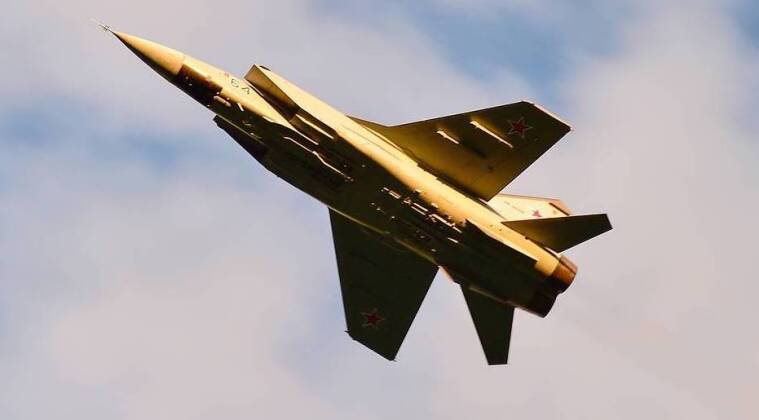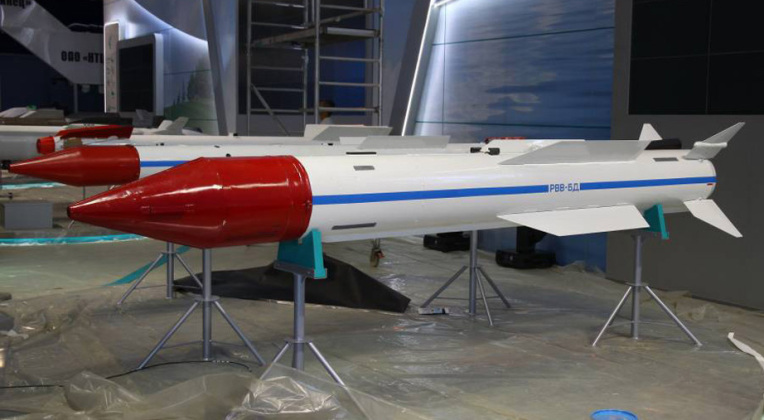News
Soviet Interceptor Project 701: The MiG-31’s Successor Was One of the Most Ambitious Combat Jets Ever
The disintegration of the Soviet Union in 1991 and subsequent near collapse of the Russian economy spelt the end of many ambitious weapons and space programs, several of which were scheduled to enter service imminently and had already reached prototype stages. Examples include the Su-27M air superiority fighter, its promising fifth generation successor the MiG 1.42, the Navy’s Ulyanovsk Class supercarrier, and the Army’s revolutionary T-95 tank. One of the most mysterious terminated Soviet weapons programs, and one which was less far along in development, was the Mikoyan 701 heavyweight interceptor which was set to be the latest of many interceptor classes that placed Soviet capabilities ahead of the world. Following on from the MiG-25 Foxbat, the world’s fastest ever combat jet which even 27 years after its first flight could still go head to head with the top U.S. Air Force fighters, and the later MiG-31 Foxhound which introduced the world’s first phased array radar for air to air combat and first sustained supersonic cruise capability, the Mikoyan 701 potentially promised to be more groundbreaking still. The aircraft was not expected to enter service before the late 2000s or early 2010s, and the MiG-31 was to be succeeded by the enhanced MiG-31M which was ready for serial production in 1994. With even this interceptor cancelled by the Russian government due to a lack of funds, despite development being competed, it was little wonder that its extremely ambitious successor that still needed considerably more investment to complete was also quickly terminated.

The Mikoyan 701 was first proposed in the late 1980s, and had a very extreme endurance of 11,000km, although it was expected to usually operate supersonically at Mach 1.85 to Mach 2 speeds and 17,000m altitudes which would reduce its range to 7,000km. Like the MiG-31, the aircraft was intended to protect the country’s vast but sparsely populated Arctic, Far Eastern and Central Asian regions. Its airframe was long and sleek with small canards, a large ‘cranked’ delta wing with sizeable leading edge extensions and twin engines mounted in the upper rear fuselage and fed by a large split dorsal intake. A small fin sat on top of its engine nacelles. The estimated length was a massive 30m and wingspan 19m, compared to a 10m wingspan for NATO’s primary fighter the F-16 and 14m for the MiG-31. What was particularly notable was its armament, which would reportedly be carried internally to provide greater stealth and a more aerodynamic design. The interceptor’s sensor suit was expected to be revolutionary much as that of the MiG-31 had been, although projecting where the Soviet radar industry would have reached by that time and whether a quantum radar would have been complete remains difficult. With the USSR having been 19 years ahead of the world integrating an electronically scanned array radar onto a fighter/interceptor, and 25 years of the United States in doing so on a serial production fighter, the MiG 701 was expected to continue this lead where post-Soviet Russia largely lost it.

The MiG 701’s armaments suite remains a mystery, with the USSR having by 1991 developed what was widely considered the world’s most capable air to air missile, the R-37, which was set to enter service around 1994 with the MiG-31M. The missile had a range of over 300km, active radar guidance and a large warhaed of over 60kg, although the Soviet collapse meant Russia would only resurrect the program shortly before 2010, with some improvements as the R-37M. The MiG 701 may have at first integrated an advanced R-37 variant, before moving on to a clean sheet design of its own, much as the MiG-31 had initially relied on R-40 missiles from the MiG-25. The USSR had made considerable progress developing hypersonic weapons before its collapse, and the possibility of an extremely long ranged hypersonic air to air missile remained significant – although the R-37 was already technically a low hypersonic missile capable of Mach 6 speeds.
The MiG 701 would have guarded Soviet airspace against future NATO stealth aircraft such as the B-2 Spirit bomber, and was the first entirely clean sheet Soviet interceptor design since the 1960s when the MiG-25 had first flown. Over three decades after its cancelation details on Russian plans to develop a MiG-31 successor under the PAK DP program remain few and far between, although the aircraft may well materialise as a MiG-31 derivative possibly based on the MiG-31M due to the much greater limitations Russia faces both in R&D and in its defence budget compared to the Soviet era. Some reports have indicated, however, that the PAK DP may be more ambitious still than the MiG 701 and be designed for space warfare – a capability the MiG-31 has itself increasingly emphasised.












